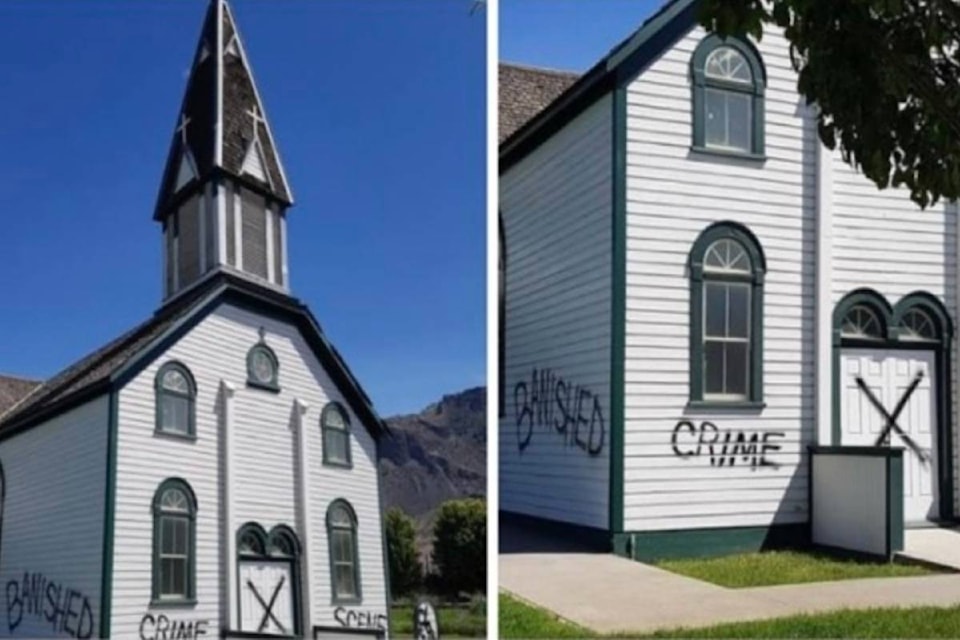The Tk’emlúps te Secwépemc First Nation has expressed its disappointment with graffiti discovered scrawled on the outside of a heritage church on its reserve.
In a press release, Chief Rosanne Casimir said the band was “deeply disturbed to learn that the Saint Joseph’s church was vandalized.”
The graffiti was apparently discovered late on the morning of Monday, May 31— just days after the band announced it had discovered the remains of 215 children who attended the Kamloops Indian Residential School, which was run by the Missionary Oblates of Mary Immaculate, a congregation of the Catholic Church.
The Kamloops Indian Residential School operated from 1890 until 1977, with the federal government assuming administration of the school from 1969 until it closed in 1977.
Photos of the graffiti posted to social media show the words “evicted,” “banished” and “crime scene” written on the siding of the century-old building at 200 Chilcotin Rd., as well as a large “X” on the door.
Much of the graffiti appeared to have been scrubbed off by Tuesday. though some of the markings were still visible.
Kamloops RCMP has said it is investigating.
“The church was built from the ground up by Tk’emlúps te Secwépemc members,” Casimir said in the release. “We understand the many emotions connected to a Roman Catholic run residential school. At the same time, we respect the choices that Tk̓emlúps te Secwépemc ancestors made, over 100 years ago, to erect this church.”
St. Joseph’s Catholic Church, at the west end of Chilcotin Road, was built by Catholic Missionaries and the Tk’emlups te Secwépemc people, established after the Hudson’s Bay Company relocated its fort to the west side of the North Thompson River in 1843.
Although the signboard in front of the church today indicates it was originally built in or around 1870, part of it is actually much older.
When the Tk’emlúps band undertook restoration of the church in the mid-1980s, the remains of a hewn log floor system were discovered within the building, possibly part of the original church erected on the site by the Secwépemc te Tk’emlúps. The first missionaries in the area were the Jesuits in 1843. Reports of a cabin at the site date back to 1846.
The church’s appearance today is how the church was reconstructed in 1900.
READ MORE: Indigenous leaders frustrated after Pope passes on apology for residential schools
READ MORE: Motion passes urging feds drop court actions on rulings regarding First Nations kids
Like us on Facebook and follow us on Twitter.
Want to support local journalism? Make a donation here.
